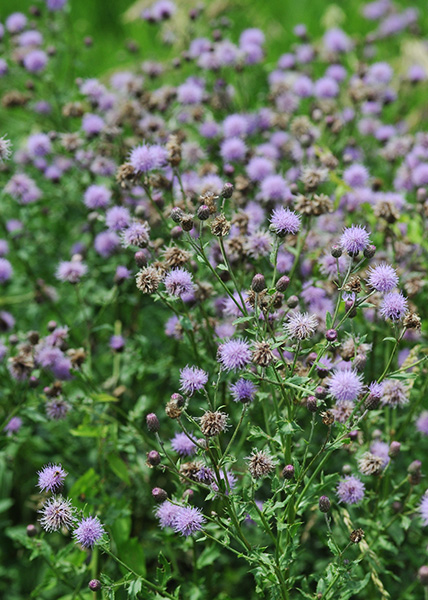
Date: June 29, 2010. Location: Hickory Hill Park
| Classification Hierarchy | |
| Kingdom | Plantae |
| Subkingdom | Tracheophyta |
| Superdivision | Spermatophyta |
| Division | Magnoliophyta |
| Class | Magnoliopsida |
| Subclass | Asteridae |
| Order | Asterales |
| Family | Asteraceae |
| Genus | Cirsium |
| Species | Cirsium arvense |

Date: June 29, 2010. Location: Hickory Hill Park
Scientific Name: Cirsium arvense [Cirsium probably from Cirsion a name used by Dioscorides to indicate that the plant was a cure for swollen veins; arvense = of fields.]
Common Name: Canada thistle
Origin: Alien (Eurasian origin)
Notes:"Primary Noxious Weed". Distinctive features: perennial habit, reproduces by both seed and rhyzomes, it is often found in colonies. Heads are small and closely clustered. Bracts lack sharp spines. Leaf spines are sharp and effective. Plants are imperfect dioecious.
Additional references: 1, 2, 3, 4, 5, 6, 7, 8, 9, 10, 11, 12, 13, 14, 15, 16, 17, 18.
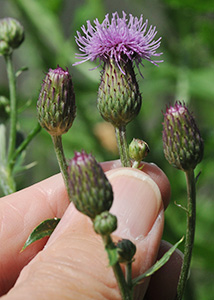
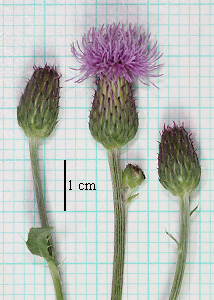
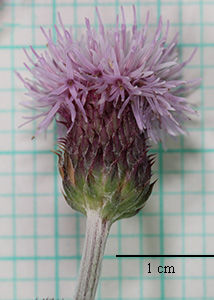

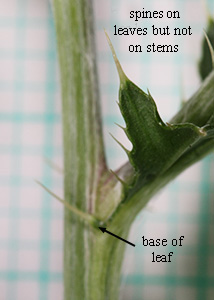
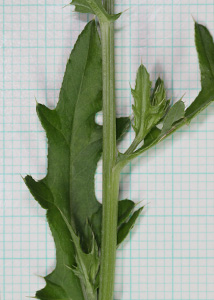
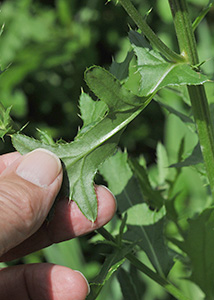

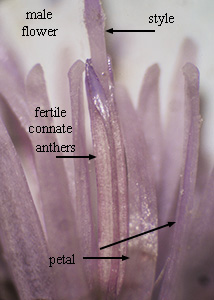
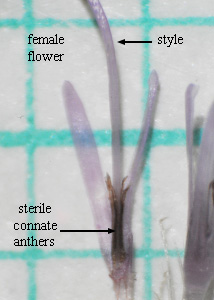
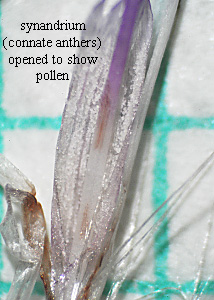
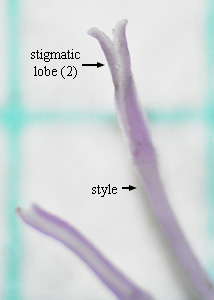
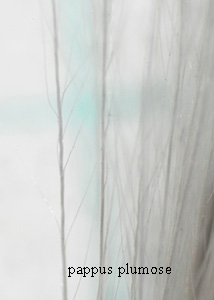
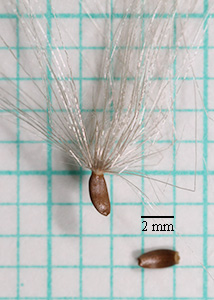


Flowers: purplish-pink, occasionally white; plants are unisexual—female plants have sterile synandria (fused anthers); heads are imperfectly dioecious, numerous, often clustered; involucres small (1-2 cm high) about half the size of other members of this genus; involucral bracts (phyllaries) are flattened, pointed and turned out at the tip; cypselae brown, 2-4 mm long; pappi 13-32 mm long.
Stems: 1-many, leafy flowering stems sprout from deep rhizomes, sometimes branched, plants usually 1 to 3 feet high, often in colonies.
Leaves: up to 1 foot long, very prickly margined, often shallowly to deeply pinnatifid, lobes well separated, main spines 1-7 mm long, adaxial (top) surface green and glabrous or nearly so. abaxial surface glabrous to gray-tomentose; with maturation, margins contort to direct spines in many directions.
Glossaries of botanical terms: 1, 2, 3, 4, 5, 6, 7, 8, 9, 10.